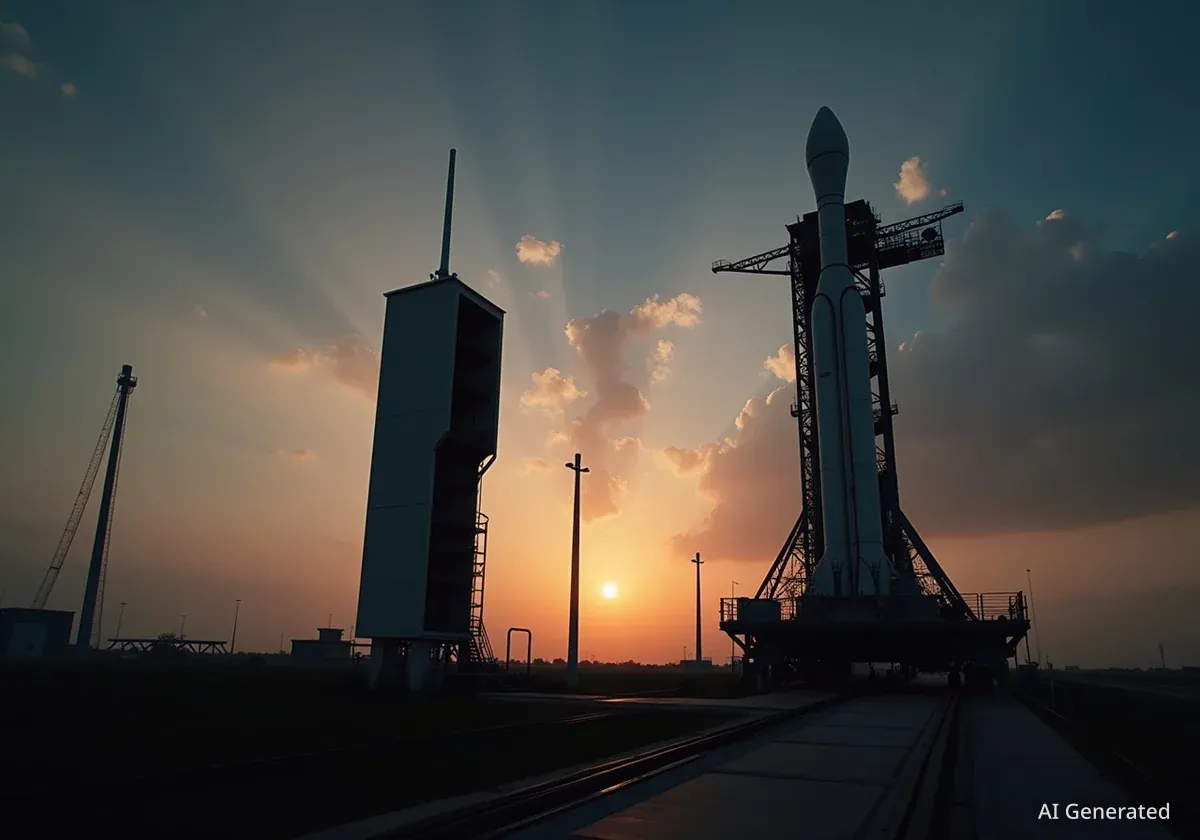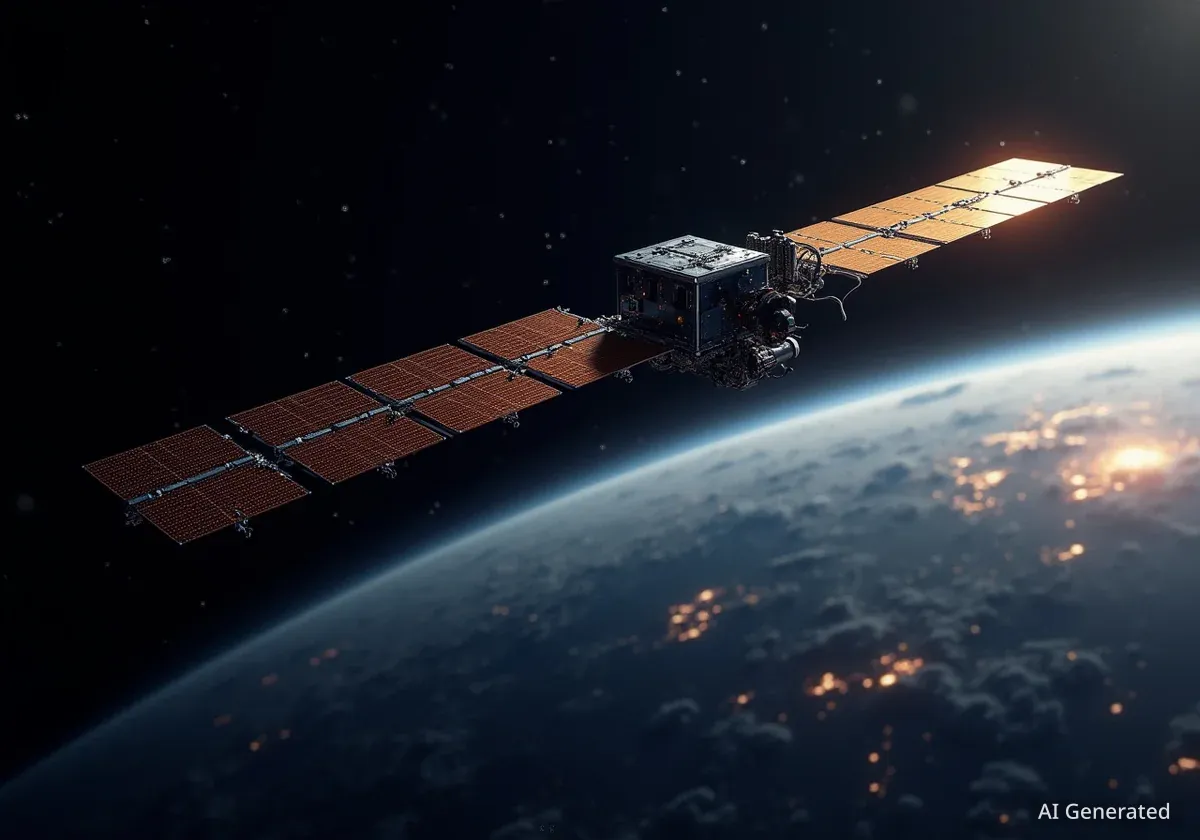India has established itself as a major force in space, celebrated for its successful interplanetary missions and cost-effective launch services. However, a significant operational gap remains: the country currently lacks the ability to deploy satellites on short notice. This limitation affects its capacity to respond swiftly to urgent national security threats or humanitarian crises.
Developing a tactically responsive launch capability is now emerging as a national priority. This would allow for the rapid deployment of replacement or mission-specific satellites, enhancing strategic flexibility and ensuring critical space-based services like communication, navigation, and surveillance are available when most needed.
Key Takeaways
- India is a proven space power but cannot currently launch satellites at short notice, creating a strategic vulnerability.
- Rapid launch capabilities are essential for responding to natural disasters, security threats, and maintaining satellite network resilience.
- A proposed roadmap involves standardizing satellite components, fostering public-private partnerships, and dedicating launch infrastructure.
- The goal is to create a system that can deploy a satellite within days or weeks of a request, rather than the current months-long timeline.
The Need for On-Demand Space Access
Satellites form the backbone of modern infrastructure, supporting everything from weather forecasting and telecommunications to financial transactions and military operations. When a critical satellite fails or a new threat emerges, the ability to launch a replacement quickly is not a luxury—it is a strategic necessity.
For India, this capability is particularly relevant. During natural disasters such as cyclones or floods, a rapidly deployed imaging satellite can provide real-time situational awareness, mapping affected areas and guiding rescue teams far more effectively. This can save lives and streamline relief efforts.
From a security perspective, the ability to launch a surveillance satellite on short notice provides a significant advantage. It allows for monitoring rapidly evolving situations along borders or in maritime domains, offering crucial intelligence without telegraphing intent months in advance through a conventional launch schedule.
What is Responsive Launch?
Tactically responsive launch refers to the capacity to integrate a satellite with a rocket and launch it into a specific orbit within a very short timeframe—typically days or weeks, rather than the months or years required for traditional missions. This involves having pre-built satellites, standardized components, and launch vehicles ready for rapid assembly and deployment.
A Practical Roadmap for India
Achieving rapid launch capability does not require starting from scratch. India can leverage its existing strengths, including proven expertise in mission design, a robust satellite manufacturing ecosystem, and a growing private-sector launch industry that brings agility and innovation to the forefront.
Experts propose a multi-step approach focused on efficiency, standardization, and collaboration.
Standardization of Satellite Components
One of the most significant bottlenecks in preparing for a launch is integrating a unique satellite (the payload) with its rocket. By encouraging a national standard for small satellite buses—the chassis upon which satellites are built—this process could be dramatically simplified.
With standardized buses:
- Payloads could be integrated much faster, almost like plugging in a USB device.
- Components could be mass-produced and stockpiled, reducing lead times.
- Launch providers would know the exact specifications to expect, streamlining pre-flight checks.
Public-Private Partnerships and Dedicated Infrastructure
The rise of private space companies in India presents a major opportunity. The government can act as an anchor customer, sponsoring demonstration missions to validate procedures for quick-turnaround launches. This would not only build confidence in the system but also stimulate private investment in this niche capability.
Another practical step is to reserve dedicated launch windows and infrastructure for responsive missions. Allocating specific times at launch ranges and creating expedited safety review processes for standard mission profiles would remove significant bureaucratic and logistical hurdles that currently slow down operations.
Global Context
Other space powers are actively developing similar capabilities. The U.S. Space Force has its Tactically Responsive Launch (TacRL) program, and China has demonstrated rapid deployment with its Kuaizhou series of solid-fueled rockets. Developing this capability is seen as essential for maintaining a strategic edge in space.
Aligning National Priorities for a Cohesive Strategy
For a responsive launch system to be effective, clear protocols must be established. This involves aligning the requirements of India's civil and defense space programs to create a unified national strategy.
Key questions must be answered in advance:
- Who has priority access to a rapid launch during a national emergency?
- What is the chain of command for authorizing such a mission?
- How will civil assets, like weather satellites, be prioritized alongside defense needs?
Defining these protocols before a crisis occurs ensures that when the need arises, the system can function smoothly and without inter-agency conflict. This coordination is just as critical as the hardware itself.
"He who is vigilant and swift does not perish."
— Mahabharata (Vidura Neeti)
This ancient wisdom underscores the modern imperative. In the high-stakes domain of space, speed is directly linked to security and resilience.
Investment and the Path Forward
Building this capability does not necessarily require massive upfront government expenditure. The strategy relies on smart investments to catalyze a self-sustaining ecosystem. Initial funding can be sourced by reallocating a small percentage of existing civil space budgets, combined with defense procurement funds specifically targeted at this capability.
Targeted grants to startups working on standardized components or agile launch systems can also accelerate progress. The primary goal of government investment should be to demonstrate viability, thereby attracting larger private capital to scale the system.
With a focused program built on standardization, institutional coordination, and pilot missions, India can close this strategic gap within the next decade. For a nation with ambitions of being a leading space power, building a rapid-launch capacity is no longer an option, but an essential step toward securing its future in orbit and on Earth.





